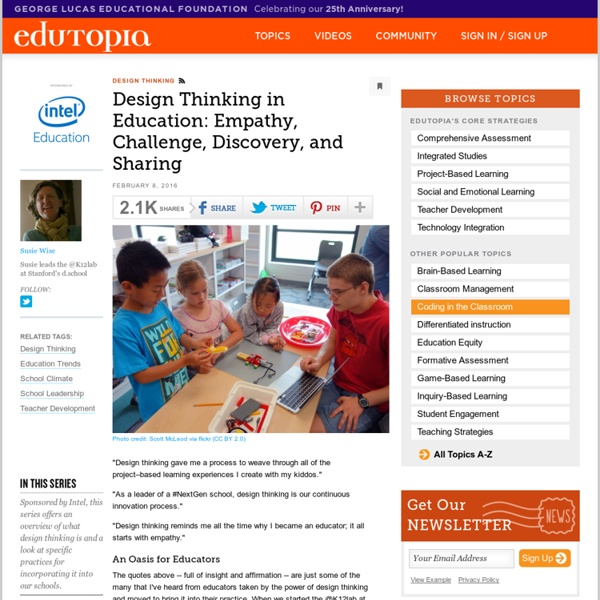Design Thinking in Education: Empathy, Challenge, Discovery, and Sharing

Design Thinking and PBL
While project-based learning has existed for decades, design thinking has recently entered the education lexicon, even though its history can be traced back to Herbert A. Simon's 1969 book The Sciences of the Artificial. So why the resurgence of these ideas? Lately, I have heard teachers and school leaders express a common frustration: "We are _______ years into a _______ initiative, and nothing seems to have changed." Despite redesigning learning spaces, adding technology, or even flipping instruction, they still struggle to innovate or positively change the classroom experience. Imagine innovation as a three-legged stool. Consider this conundrum: much of what we know about teaching comes from 16+ years of observation as students. If we look at the science of improvement, systematic change occurs between the contexts of justification (what we know) and discovery (the process of innovation). PBL and 21st-Century Skills A project like Billy’s can seem daunting.
Design Thinking in the Primary Grades – Krissy Venosdale
If you’re thinking about starting a Makerspace in your school, one thing you might want to consider is how to make sure kids are digging deep in their learning. Questions to ask include: How can we tie the maker mindset into existing curriculum?How might we ensure that our students are going deep with their creativity, problem solving, and reflection? These questions are way more important than, “What stuff do I buy?” One way of encouraging deep learning is by incorporating the design thinking process. So what might this look like for the primary grades? Possible topics: Design a pizza for your favorite book character. Design a trap for a leprechaun. Those are just two topics that we’ve tried. Primary: Develop a movie trailer for a Mystery Number. Design an exhibit at the zoo for your favorite animal. Create a dream bedroom for a classmate. Develop a board game based on a part of history that interests you. Develop a set of rocket fins with the 3d printer.
How Design Thinking has Improved Genius Hour in Grade 3/4
For the past couple of years, I've been experimenting with self-directed learning in my classroom. We refer to this as “Awesome Ideas” time, and it quickly became my students’ favourite time of the day. This process was a bit challenging for students, as they struggled to come up with innovative ideas, but I knew they were enjoying the learning. They work on a wide variety of ideas… Information on wildlife: Writing a play that all students have a role in: Learning and Sharing about Chemistry: I started by explaining to my students what Genius Hour is. As a class, we discussed how people tend to come up with great ideas when it is something they are interested in. Students began the process working how they always have in class. I spent about a month teaching my students how to use various tools effectively in the classroom. As new tools came along, we would try them out in the classroom. How has this helped students to be better learners? Slideshow that was presented in class: Give it a try!
Related:
Related:



